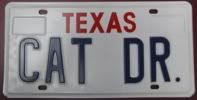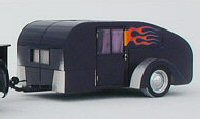Aluminum Sheeting/Truck Trailer Roofs
15 posts
• Page 1 of 1
Aluminum Sheeting/Truck Trailer Roofs
I'm having a bit of difficulty sourcing the aluminum for the outside skin of my TD. I live in a rural area that doesn't leave me many options.
I was able to find a place (not very close, but in the same state) that sells the aluminum for truck trailer roofs. I've seen posts in these forums from people that have suggested using this type of aluminum, possibly they have used it too.
Anyway, the guy on the phone was clueless regarding the grade and temper of the aluminum they sell, only that it was .040" thick, 'shiny', and $9.50 per linear foot.
I am guessing, through some Google research, that it is most likely 3003H16 mill finish aluminum. I had been hoping to find 5052H32. I did more Google research to determine what the difference is in the alloy and temper, but I still have some reservations. I was hoping to take advantage of the collective knowledge/experience of the group to help me sort this out.
Is there any real discernible difference between the 5052H32 and the 3003H16? Is there any reason that I should NOT use the 3003H16 truck trailer roofing? If not, why was I recommended to buy the 5052H32?
I was able to find a place (not very close, but in the same state) that sells the aluminum for truck trailer roofs. I've seen posts in these forums from people that have suggested using this type of aluminum, possibly they have used it too.
Anyway, the guy on the phone was clueless regarding the grade and temper of the aluminum they sell, only that it was .040" thick, 'shiny', and $9.50 per linear foot.
I am guessing, through some Google research, that it is most likely 3003H16 mill finish aluminum. I had been hoping to find 5052H32. I did more Google research to determine what the difference is in the alloy and temper, but I still have some reservations. I was hoping to take advantage of the collective knowledge/experience of the group to help me sort this out.
Is there any real discernible difference between the 5052H32 and the 3003H16? Is there any reason that I should NOT use the 3003H16 truck trailer roofing? If not, why was I recommended to buy the 5052H32?
cya,
Alan
Alan
-

alanv73 - Teardrop Inspector
- Posts: 16
- Images: 1
- Joined: Tue Aug 04, 2009 4:16 pm
- Location: Central PA
That's all Greek to me. I used .040 aluminum on my roof and it worked great. It seems that .040 is the common thickness used here.
 Mark (& Cindi)
Mark (& Cindi) Visit our website: Little Swiss Teardrop
I was wondering why the water balloon was getting bigger... and then it hit me.




-

planovet - The Cat Man
- Posts: 5583
- Images: 3
- Joined: Tue Nov 27, 2007 4:48 pm
- Location: Plano, Texas

 Doug
Doug





